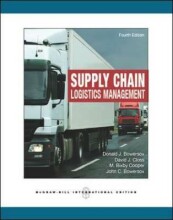Summary: The Truth In Our Bones Week 1
- This + 400k other summaries
- A unique study and practice tool
- Never study anything twice again
- Get the grades you hope for
- 100% sure, 100% understanding
Read the summary and the most important questions on The Truth in our Bones Week 1
-
1 Subadult Age-at-Death Estimation
This is a preview. There are 22 more flashcards available for chapter 1
Show more cards here -
What is endochondral ossification?
Growth occuring in a cartilage model
Bones will fuse
This is how most bones develop, including your long bones -
How many bony elements does a newborn infant have?
Around 300 -
How can the Age-of-Death of a subadult be estimated?
- Number and types of bones (endochondral ossification)
- State of Epiphyseal fusion (endochondral ossification)
- Bone size (endochondral ossification)
- Fontanelle closure (intramembranous ossification)
- Dental formation
- Dental eruption
-
Explain ''Number and types of bones''
- Some bones don't fuse of form until later (for example the patella/kneecaps)
- By observing wich bones are present in the subadult skeleton, we can get an idea of how old they must have been
-
What is intramembranous ossification?
- Bone begins to accumulate along the outer and inner edges, or plates of the membrane
- Two layers of compact bone with spongy bone in the middle as the filling
-
What is dental growth called?
Odontogenesis -
In what region of the skull does the fontanelle close first?
On the back of the skull (posterior/occipital fontanelle) -
Why are dental formation and dental eruption considered the most accurate and most precise methods for age-of-death estimation in subadults?
Because the development and eruption of the teeth are less affected by environmental disruptions than bone growth -
2 Adult Age-at-Death Estimation
This is a preview. There are 11 more flashcards available for chapter 2
Show more cards here -
What is the main reason why it is more difficult to esimate age-at-death in adult skeletal remains, than in subadult skeletal remains?
Skeletal degeneration in adults occurs over a long time and is influenced by many factors, which makes it less accurate and precise way to assess age compared to skeletal growth in subadults -
Age category young adult
18 to 34 years
- Higher grades + faster learning
- Never study anything twice
- 100% sure, 100% understanding





























